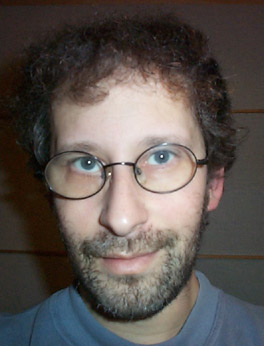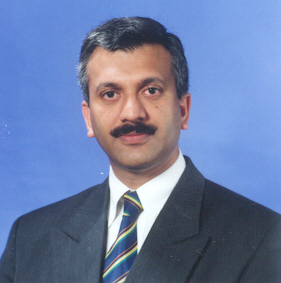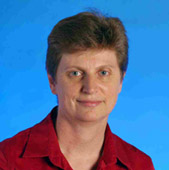HIS'03 Plenary Talks
HIS'03 is blessed to have the following plenary speakers:
Honorary Chair's Welcome Message
David B. Fogel

People have developed computer algorithms and heuristics for problem solving for decades. Much of this time was spent "proving" that one method was better than another, or that a particular method would perform optimally, in theory. As the famous saying states: "In theory, theory is the same as in practice. But in practice, it isn't." This truth has now become well recognized: Perfect solutions are no longer the goal in real-world problem solving, rather solutions are needed that are simply good enough and achieved in a short enough amount of time to be useful. To that end, efforts are now being made in earnest to examine the properties of diverse problem-solving techniques and search for ways to hybridize them for more effective and efficient procedures.
This Third International Conference on Hybrid Intelligent Systems (HIS'03) offers much vital information to the problem-solving practitioner. The topics of neural networks, evolutionary computation, fuzzy systems, support vector machines, clustering, classification, and others will undoubtedly be familiar. What is unfamiliar is the degree to which combinations of these methods and other techniques can be applied to a wide range of problems, which is evidenced in these proceedings. There remains the challenge of generalizing from problem to problem, understanding what it is that makes an approach effective in a particular setting and porting that approach to a new setting effectively. The papers offered here serve as data points for future data mining, as we endeavor to garner insight into how to craft the best combinations of approaches to our own problems.
It's my pleasure to serve as the honorary chair of this event. I am especially pleased that this conference is taking place in Melbourne, Australia, where fifty percent of my genes got their start. We are all hybrids, after all. It is an exciting time, for even as the perceived rate of advance in the core methods of computational intelligence may appear to be slowing, the rate of advance in combining these techniques and addressing some of the most important issues and challenges we face continues to accelerate. I look forward to hybridizing that excitement with you at HIS'03.
Sincerely,
David B. Fogel
Honorary Chair, HIS'03
Natural Selection, Inc. - USA
top
Title: Hybrid Computational Intelligence with Evolutionary Computation and Object Neural Networks

Evolutionary computation provides a basis for computer self-learning in the absence of human expertise. Evolutionary algorithms can be combined usefully with diverse other structures and methods of computational intelligence and AI to optimize performance, adapt to changing circumstances, and meet goals in a range of environments. Experiments with "Blondie24" have recently shown that an evolutionary algorithm can be combined with neural networks to learn to play checkers (draughts) at a level that is comparable with human experts, even without relying on human expertise in selecting features to evaluate alternative positions. The results from this Blondie24 project will be reviewed. New efforts that extend the approach to evolving object neural networks, which focus on specific areas of concern as defined by human expertise, in the game of chess will be detailed. The potential for allowing an evolutionary process to learn how to focus its attention without human guidance will be discussed. Members in the audience will have the opportunity to challenge Blondie24 to a game of checkers, and may also have the opportunity to compete against chess program that has evolved to the master level of competition.
BioDr. David B. Fogel is chief executive officer of Natural Selection, Inc. His experience includes over 17 years of applying computational intelligence methods and statistical experimental design to real-world problems in industry, medicine, and defense. Prior to joining Natural Selection, Inc. in 1993, he was a Systems Analyst for Titan Systems, Inc. (1984-1988), and a Senior Principal Engineer at ORINCON Corporation (1988-1993). He received the Ph.D. in engineering sciences from the University of California at San Diego in 1992, and has subsequently taught undergraduate and graduate courses in evolutionary computation, stochastic processes, and statistical process control. Dr. Fogel has over 200 publications in the technical literature, the majority treating the science and application of evolutionary computation. He is the author or co-author of six books, including Blondie24: Playing at the Edge of AI, 2002 and How to Solve It: Modern Heuristics . Dr. Fogel served as the founding editor-in-chief of the IEEE Transactions on Evolutionary Computation (1996-2002). He was the founding president of the Evolutionary Programming Society (1991-1993) and was elected a Fellow of the IEEE in 1999. He also serves as the editor-in-chief of BioSystems, and is on the editorial boards of several other technical journals. Dr. Fogel served as the general chairman for the 2002 IEEE World Congress on Computational Intelligence, held in Honolulu, Hawaii, May 12-17, 2002, and was program chair for the First IEEE Symposium on Combinations of Evolutionary Computation and Neural Networks, May 11-12, 2000, San Antonio, TX. He received the 2002 Sigma Xi Southwest Regional Young Investigator Award, the 2003 Sigma Xi San Diego Section Award for Distinguished Achievement, the 2003 SPIE Computational Intelligence Pioneer Award, and will receive the 2004 IEEE Kiyo Tomiyasu Technical Field Award next summer.
DFogel@natural-selection.com
Natural Selection, Inc.
3333 N. Torrey Pines Ct., Suite 200
La Jolla, CA 92037
http://www.natural-selection.com/People/DavidFogel.htm
Graham Williams
Plenary Talk
Title: Mining the Data Stream

Abstract
Data Streaming involves processing data as it becomes available. Generally there is only a single chance to see the data. Such a scenario is becoming more common given the growing amount of data being collected. Streaming presents a number of interesting challenges for Data Mining, and can be considered more than just iterative model building. In this talk we will discuss in particular the temporal aspect that is inherent in stream data mining and review and investigate suitable ananlysis techniques. The talk will be grounded in actual applications in administrative data mining, particularly in health care and insurance data.
BioDr Graham Williams is principal computer scientist, CSIRO Data Mining. Graham has lead many data mining projects for clients including the Health Insurance Commission, the Australian Taxation Office, the Commonwealth Bank, NRMA Insurance Limited, and the Federal Department of Health and Ageing. He has developed software and hardware environments for data mining, and implemented web services for the delivery of data mining. Developments include HotSpots for identifying target areas in very large data collections and WebDM for the delivery of data mining services over the web.
Graham is involved in numerous international artificial intelligence and data mining research activities and conferences. He has worked with collaborators in Europe, Asia, and the US. His research interests cover many aspects of artificial intelligence, data mining and very large databases, including linked health data, spatio-temporal data mining, evolutionary rule induction, agent systems, web services, machine learning, and GNU/Linux. He has editted a number of books and has authored many academic and industry papers.
Graham's PhD (Australian National University, 1991) introduced the then novel idea of combining multiple predictive models for the better understanding of data and predictive capability. The thesis explored algorithms for building multiple decision trees from a source data set (land use data) and combining those decision trees.
Graham has worked for a number of organisations including: CSIRO Land and Water in Canberra, Australia, developing award wining spatial expert systems (using Prolog); BBJ Computers in Melbourne, Australia, as Research and Development manager and then Marketing Manager, overseeing the implementation of a data mining tool for integration with a 4GL database environment; Vish Corporation, developing one of the first and one of the longest running Expert Systems for Esanda Finance, Melbourne, Australia; and the Australian National University, Canberra, lecturing in Database Systems, Machine Learning, Data Mining, and Software Engineering.
Dr Graham.Williams@csiro.au Tel: (+61 2) 6216 7042Principal Research Scientist Fax: (+61 2) 6216 7111
CSIRO Data Mining GPO Box 664 Canberra
http://datamining.csiro.au/gjw ACT 2601 Australia
top
David Corne
Plenary Talk
Title:Bioalgorithmics: Evolutionary and other algorithms ex silico

"Bioalgorithmics" encompasses the interdisciplinary science of computation with biological substrates, as well as in silico algorithms inspired from nature and the use of intelligent computation on biological problems. In this talk we focus on the former, which concerns algorithms implemented ex silico; that is, computations performed by or with DNA, cells, proteins and other biomolecules. This includes the familiar notion of DNA computing, as well as the new sciences of protein, cellular and molecular computing, and the directed evolution, via evolutionary algorithms implemented in high-throughput biological processes, of novel proteins. By exploiting the computational capabilities of biomolecules, and the discovery power of evolutionary search, developments in bioalgorithmic technologies are set to have major impact in health, pharmaceuticals, materials, and more.
BioDavid Corne occupies a Chair in Computer Science (from September 2003) at the University of Exeter, United Kingdom, where his group works across the scope of bioalgorithmics, with projects in bioinformatics, evolutionary (and other bio-inspired) computing, molecular computing and directed evolution. Following degrees in Mathematics and Artficial Intelligence (respectively), he was a researcher at the Department of Artificial Intelligence, University of Edinburgh for six years, working first on intelligent design support systems (with Tim Smithers), and then on evolutionary scheduling and timetabling (with Peter Ross and Hsiao-Lan Fang), producing some early and influential ideas and techniques which have since become common in such applications. He moved to the University of Reading in 1995, and built up a track record in various aspects and applications of evolutionary computation, notably new algorithms and theory in evolutionary multiobjective optimisation (with Joshua Knowles), novel observations on evolutionary algorithm dynamics and parameterisation (with Martin Oates), new pattern discovery techniques in bioinformatics (with Andrew Meade and Richard Sibly), and new theory and modelling techniques with particular relevance to Directed Evolution (with Douglas Kell and Martin Oates). He has also published (with various), on applications of evolutionary computation, neural computation, and immune systems methods in cancer radiotherapy, database management, data mining, DNA sequencing, phylogeny, pipeline routing, telecommunications routing, refrigeration system management, and web intelligence. He is a member of the UK EPSRC Peer Review College, editorial board member for six journals, steering committee member for two international conference series, and programme committee member for about six conferences per year. Lately, per annum, he writes/co-writes about 12 articles, and reviews about 120
D.W.Corne@ex.ac.uk
Department of Computer Science
Harrison Building
University of Exeter
Exeter EX4 4QF
United Kingdom
top
Nikhil Pal
Plenary Talk
Title: ON-LINE Feature and sensor selection - the way to go

Abstract
An important goal of designing intelligent systems is to honor two principles
of design: use of minimum information and use of minimum description length.
If we can use only the features that are adequate for the task at hand,
we move a few steps to honor the two stated principles. So feature selection
is very important. Feature selection methods are primarily "off-line"
in nature and they ignore the fact that the quality (importance) of a
feature depends on the TOOL being used and the PROBLEM being solved. So
we introduce a novel concept of "ON-LINE" feature selection
where the system picks up the required features along with training of
the system. In this context, we will explain three systems. The first
system is designed for multi-layer perceptron type networks. The system
is applicable to both classification and function approximation type problems.
The second system is built based on a neuro-fuzzy framework for solving
function approximation type problems. This system is then modified for
dealing with classification type problems. There is another important
related problem, selection of sensors. For many applications, the input
comes from different sensors. For example, in case of an intelligent weld
inspection system, the sensors could be X-ray image, Acoustic emission,
eddy current and so on. The signal obtained from each sensor is used to
compute several features; eg., the X-ray image can be used to compute
several co-occurrence based features. In such cases, a more challenging
problem comes - selection of sensors (in other words, selection of groups
of features, where each group is computed using the signal obtained from
a particular sensor). Clearly, if the number of necessary sensors can
be reduced, the hardware cost of the system, the design complexity of
the system and the cost (both in terms of time and money) of decision
making can be drastically reduced. We will discuss two systems for online
sensor selection. The first approach is applicable to multi-layer perceptron
type networks while the second method is for radial basis function type
network.
Nikhil@isical.ac.in
Electronics and Communication Sciences Unit
Indian Statistical Institute
203 B T Road, Kolkata - 700108
http://www.isical.ac.in/~ecsu/nrpal.html
top
Rajkumar Roy
Plenary Talk
Title: Integrating Quantitative and Qualitative Information in Design Optimisation: A Soft Computing Approach

Abstract
When solving a real life engineering design problem, engineers strive to ensure that the obtained results are sufficiently real in order to apply them in practice. The quest to achieve this realism in engineering solutions is still generating enormous research interest from various fields. It is widely accepted that Quantitative (QT) and Qualitative (QL) information is an intrinsic feature engineering design optimisation. However, it is surprising that the use QL models in design optimisation problem are not as common as QT models. This could become a problem if QT based models are not available or are partially defined. There are various instances where both type of information are equally important for decision-making and yet solutions are merely solved based only on the QT model. For example, in deciding possible solutions in terms of the likely quality of a hot rolled steel (perceived from the colour of the hot steel) and the cost of increasing the process performance. Here, practitioners reducing the problem formulation to cost related behaviour bias could end up with unrealistic solutions.
Although robust methods such as statistical methods and evolutionary based approaches are emerging as solution alternative for engineering design problems, there are still limited efforts in combining QT and QL information for engineering design optimisation. Cranfield approach for addressing this problem is based on hybrid combination of evolutionary computing techniques and fuzzy logic. This elaborate approach adopts the principle of multi-objective optimisation to explore the functional relationship between the QT and QL information. Here, is it assumed that the design objective is conflicting in nature which suggests that Pareto front is present in the problem (Oduguwa, 2003). From the Fuzzy logic models both the membership function values and the deffuzzified domain values were used as fitness function values in the optimisation algorithm to guide the search. The optimisation algorithm, using objectives for fitness evaluation, ranks both objectives based on the Pareto dominance criteria. Provided a Pareto front exists, this finds the best compromise between both the QT and QL information.
Oduguwa et al (Oduguwa, 2003) presented a real life rod design optimisation problem to illustrate the solution strategy outlined above. The design problem outlined in the paper is a two objective problem where the first objective is to minimise the deformation load expressed by a QT model and the second objective is to maximise the roundness shape profile of the rod. Where the roundness profile is based on the perception of the engineers. The roundness profile was expressed in fuzzy rules were developed by interactive interview with the domain experts. In most of the cases examined, the proposed approach resolved the conflict between QT and QL information and provided realistic set of optimal solutions. This lecture presents perspectives in combining QT and QL information for engineering design optimisation problems. It also outlines the challenges and opportunities for future research directions.
R.Roy@cranfield.ac.uk
Enterprise Integration
Cranfield University
Cranfield
Bedford
MK43 0AL
UK
http://www.cranfield.ac.uk/sims/cim/people/roy.htm
top
Liz Sonenberg
Plenary Talk
Title: Agent deliberation in a sensor rich world

Abstract:
Exploitation of hand crafted domain knowledge has lead to the construction
of many successful multiagent systems, successful in the sense that they
exhibit complex and appropriate run-time behaviours in a dynamic, somewhat
unpredictable, environment. As the environments where such systems can
operate evolve to support more - and more intelligent - sensors, new design
considerations arise. For example, opportunities for new strategies to
balance designed-in knowledge with knowledge accessible at run time from
the environment, and approaches to selecting useful levels of abstraction
for encoding situational information. I will discuss some successes and
present some challenges.
Bio
Liz Sonenberg has research interests in aspects of reasoning machinery
as may be useful for the design of systems that exhibit complex collaborative
behaviours. For some years her major research efforts have been in the
foundations and applications of systems within the BDI (Belief, Desire,
Intention) agent paradigm, with a particular focus on teamwork, but she
has also dabbled with various elements of non-monotonic reasoning. Industry
collaborations have included the Australian Artificial Intelligence Institute,
Agent Oriented Software P/L, the Defence Science and Technology Organisation,
and Neuragenix P/L. Liz has also worked with collaborators in Psychology
and Education on studies involving human reasoning processes. More recently
she has been exploring opportunities for the use of agent technologies
to meet the challenges faced by designers and developers of mobile, context
aware applications. As part of an active group of agent researchers in
academia and industry based in Melbourne, Liz was involved in attracting
to Melbourne the Second International Joint Conference on Autonomous Agents
and Multi Agent Systems (AAMAS-03), held in July 2003. She is Program
Co-Chair for AAMAS-04 to be hosted in New York, and is a member of the
Board of the International Foundation for Multiagent Systems.
Liz is currently Head of the Department of Information Systems at the
University of Melbourne, having joined that department after 15 years
in the Department of Computer Science and Software Engineering at Melbourne.
She teaches in both formal and pragmatic aspects of computing, and has
a long-standing teaching involvement in the social impacts of technology
and in human computer interaction.
L.Sonenberg@unimelb.edu.au
Department of Information Systems
The University of Melbourne
Parkville 3010, Australia
http://www.cs.mu.oz.au/~eas/